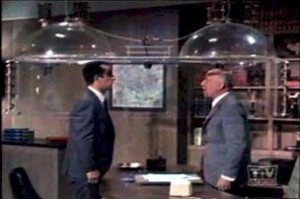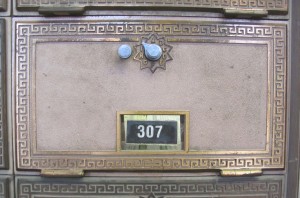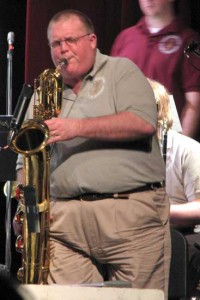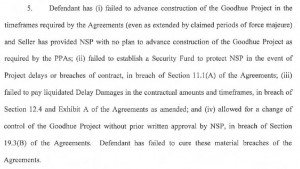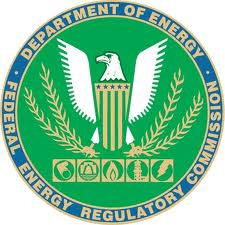Critical Energy Infrastructure Information NOT!
June 26th, 2013
At today’s 7849-7850 Rulemaking (PUC Docket 12-1246) “Advisory Committee” meeting, a discussion was had… Commission staff has wisely proposed that a map be included showing system transmission infrastructure in the Application, and that notices also have a project map showing nearby transmission lines. Makes sense to me! Particularly considering Minnesota’s policy of non-proliferation of transmission lines:
But I was shocked to hear some who should know better claim that maps of transmission lines are a tightly-guarded Critical Energy Infrastructure Information top secret! Today’s discussion of CEII and inclusion of transmission maps in an application and in notices was disturbing to say the least. There was no specific information regarding CEII categories at the meeting (internet access, anyone?), so I sent everyone a missive and attached the CEII definition from the FERC website, and this definition from MISO’s Non-Disclosure Agreement, to clarify the status of transmission maps: NON-CEII!
And from the MISO Non-Disclosure Agreement, it’s ever so clear:
The lengths that these utilities go to to keep such crucial information from the public is astounding — it’s not that they don’t know, because they are many things, but they are NOT stupid.
Who cares about whether a transmission map is CEII or not? Well, Xcel sure does, look at the ruse here to keep a transmission map out of the record:
And that map never did get in — though today I’d raise a stink, well, today I AM raising a stink. Why? Maps of the surrounding transmission system should be included in applications and notices, as proposed by Commission staff because, as we say in transmission, “it’s all connected,” and without a system map, it’s impossible for parties, agencies and landowners to visualize the plan and how the proposed infrastructure fits into the whole. Due to Minnesota’s non-proliferation policy, it’s also important information for notices because it will aid landowners’ assessment of their risk and whether or not to participate in a given docket.
Here’s the map that I’d entered in the 2007 Power Plant Siting Act Annual Hearing to show CapX 2020 Phase I (pink) and subsequent projects (blue), and its relation to the coal plants in queue at that time:

See how it’s all connected? Without that visual aid, it just doesn’t present the full picture!
Goodhue Wind — a project that stinks by any name…
June 20th, 2013
PUC pulls plug on Goodhue Wind project!
‘Bout time this project went down… What a thorny long drawn-out heated and circular discussion, but after a long five years, the Public Utilities Commission said no to Peter Mastic’s New Era and its request for an extension of time to get the project in service and operational. Did I mention this has been a long journey? It took five long years of persistent work on so many fronts, dogged work on the part of so many people! L-O-N-G! I first met with Goodhue Wind Truth and started representing them in late 2008, early 2009.
Just from today I have 12 pages of notes, so here’s the nutshell version, from the two page Revised Decision Options:
- After a protracted discussion, they first voted to DENY Todd Guererro’s Motion for another two weeks to prepare as he was just hired on. Nope, says the Commission, we don’t buy it, New Era f/k/a/ f/k/a has had plenty of time.
- And after an even longer more protracted and circular discussion, the Commission voted UNANIMOUSLY decision options 2 I & J:
- Then came their vote on the Extension Request as a housekeeping matter:
- And then, at the bottom of page 2, adding “August 23, 2013” as the date certain for a response:
DONE!
GOOD RIDDANCE!
Todd Guererro, representing Peter Mastic f/k/a f/k/a, did a valiant job given what he had to work with, a client who didn’t bother to comply with PUC Orders, Information Requests, and laws — he deserves battle pay for taking the hits hurled by the Commissioners, deserved, but he did the best job possible… well, except he apparently didn’t know that the Commission had made the determination that the project was a C-BED project many years ago, that it was not the Commissioner of Commerce.
I kept my trap shut, thinking “less is more.”
IT’S DONE!
IT’S REALLY DONE!
And an interesting sidebar, NSP had its crew there to monitor its interests (Verified Complaint for Declaratory Judgment, and what a delightful Complaint it is!), and I learned that my arch-nemesis Mike Krikava is a horn player, has a big band of reknown, Nova Contemporary Jazz Orchestra (not Les Brown, perhaps Minnesota’s Toshiko Akiyoshi??), and even played with Ed Berger. Mike brought it up, wondering how I knew the “real outside” Ed, but folks, it’s a small, small world… who knew?!?
And that after he ruins his reputation with his “heart-shaped” dot in his signature as noted by at least two of my GWT client’s cohorts:
Kinda skews my view, though the blustery honking of Bari fits him well. It’s sort of like Mark Dayton being a shep nut — I will have higher expectations — we shall see… but if Krikava were a trumpet player, well, that’d be another matter entirely.
In the Rochester Post Bulletin tonight:
PUC commissioner: It’s time to pull the plug on New Era project
Thursday – Goodhue Wind project at PUC
June 17th, 2013
Evidence is mounting that the Goodhue Wind Project, n/k/a New Era Wind Project, f/k/a AWA Goodhue, the little project that could, but assuredly is NOT, the project that has gone from something pretty much “shovel ready” and approved by the Public Utilities Commission to a project with nothing more than a P.O. Box:
… the evidence is indeed mounting that this wind project is going down, down down…
Join us at the Public Utilities Commission, Thursday June 20, 2013 “not to be decided before 10:30 a.m.” but be there early, 9:30 or so, just in case.
First, the Staff Briefing Papers:
And just to make sure we understand, because “New Era” keeps stalling saying they’re trying to get something together for a Power Purchase Agreement, that there is NOTHING WHATSOEVER happening with the PPAs, Xcel Energy filed an action to terminate the PPAs because nothing is happening, Xcel has had enough, DONE:
What a hoot! Read it and chortle! You tell ’em, Xcel! errrr… NSP!
FERC on Reliability of Bulk-Power System
June 16th, 2013
FERC, the Federal Energy Regulatory Commission, is at it again. Join in on the free webcast, also no need to register, and it’s really stimulating stuff! “Reliability of the Bulk-Power System” Doesn’t get much better than that!
This webcast could be useful, because we all know that Reliability and the Bulk-Power System are one of those conflated things, because the “Bulk-Power System” is about marketing and shipping everywhere and anywhere, and “Reliability” is more the inverse of these bul-power transfers, which can trigger instability by promoting such a high-capacity grid that the magnitude of the transfers, the long distance, and need for reactive power puts the system at risk.
Rulemaking – Certificate of Need 7849
June 12th, 2013
How to work up excitement about the Certificate of Need rulemaking??? On its own, it’s dry, detailed, wonkish stuff, thrilling only to those of us who live and breathe need decisions and utility infrastructure siting and routing… but may there’s some pizazz in the machinations surrounding input, like lack of public representation on the Advisory Committee such that even my tremendous bulk doesn’t even it out. Does Xcel deserve THREE representatives? ITC two? “Participating Utilities” two, “Wind Coalition” one and none for Goodhue Wind Truth? Here’s the list:
Plus they’re not posting the drafts on the rulemaking site, so the public has no idea what’s being proposed:
And minutes from the first meeting:
To get to the docket, go to www.puc.state.mn.us and then “search eDockets” and search for 12-1246.
We’ll be talking about the Certificate of Need criteria next, and here’s what’s proposed:
7849.0120 CRITERIA CERTIFICATE OF NEED REQUIREMENTS.
A certificate of need must be granted to the applicant on determining that:
Subpart 1. Need Demonstration. An applicant for a certificate of need must demonstrate that the demand for electricity cannot be met more cost effectively through energy conservation and load-management measures.
Subpart 2. Renewable Resource Preferred. An applicant proposing an LEGF that uses a nonrenewable energy source must demonstrate that it has considered the use of renewable energy sources, as required under Minnesota Statutes section 216B.243, subd. 3a.
Subpart 3. Assessment of Need Criteria. In evaluating a certificate of need application, the
commission shall consider the criteria contained in Minnesota Statutes, section 216B.243, subd. 3, as well as the following:
A. whether the probable result of denial would be an adverse effect upon the future adequacy, reliability, or efficiency of energy supply to the applicant, to the applicant’s customers, or to the people of Minnesota and neighboring states, considering: the region;
(1) the accuracy of the applicant’s forecast of demand for the type of energy that would be supplied by the proposed facility;
(2) the effects of the applicant’s existing or expected conservation programs and state and federal conservation programs;
(3) the effects of promotional practices of the applicant that may have given rise to the
increase in the energy demand, particularly promotional practices which have occurred since 1974;
(4) B. the ability of current facilities and planned facilities not requiring certificates of need to meet the future demand; and
(5) the effect of the proposed facility, or a suitable modification thereof, in making efficient use of resources;
B C. whether a more reasonable and prudent alternative to the proposed facility has not been demonstrated by a preponderance of the evidence on the record, considering:;
(1) D. the appropriateness of the size, the type, and the timing of the proposed facility compared to those of reasonable alternatives;
(2) E. the cost of the proposed facility and the cost of energy to be supplied by the proposed facility compared to the costs of reasonable alternatives and the cost of energy that would be supplied by reasonable alternatives;
(3) F. the effects of the proposed facility upon the natural and socioeconomic environments compared to the effects of reasonable alternatives; and
(4) G. the expected reliability of the proposed facility compared to the expected reliability of reasonable alternatives;
C. by a preponderance of the evidence on the record, the proposed facility, or a suitable modification of the facility, will provide benefits to society in a manner compatible with protecting the natural and socioeconomic environments, including human health, considering:
(1) the relationship of the proposed facility, or a suitable modification thereof, to overall state energy needs;
(2) H. the effects of the proposed facility, or a suitable modification thereof, upon the natural and socioeconomic environments compared to the effects of not building the facility;
(3) I. the effects of the proposed facility, or a suitable modification thereof, in inducing future development; and
(4) J. the socially beneficial uses of the output of the proposed facility, or a suitable modification thereof, including its uses to protect or enhance environmental quality; and.
D. the record does not demonstrate that the design, construction, or operation of the proposed facility, or a suitable modification of the facility, will fail to comply with relevant policies, rules, and regulations of other state and federal agencies and local governments.

